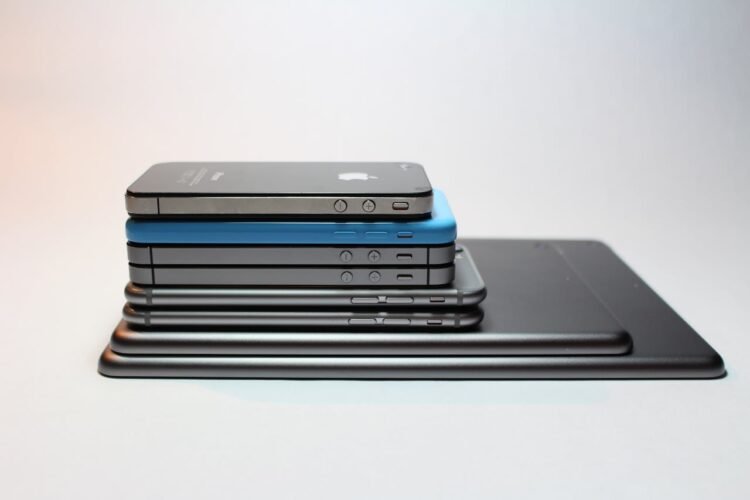Mobile internet usage continues to dominate the digital landscape, with over 60% of web traffic now coming from mobile devices. As smartphones become the primary way people access online content, businesses must adapt their digital strategies to prioritize mobile experiences. Recent data shows that mobile commerce will reach $4.01 trillion by 2025, representing 59% of all online retail sales. This shift in user behavior demands a fundamental change in how we approach web design and development – moving from treating mobile as an afterthought to making it the foundation of our digital strategies.
Understanding Mobile-First Design
Mobile-first design starts with creating websites and applications specifically for smaller screens before scaling up to larger devices. This approach differs significantly from the traditional desktop-first method, where designers would create for large screens and then strip away elements for mobile viewing.
The philosophy behind mobile-first design centers on the principle of progressive enhancement. Rather than degrading the experience for mobile users, we build a solid foundation that works well on mobile devices and then add more complex features and interactions for larger screens. This method ensures that the core content and functionality remain accessible and usable regardless of device type.
Research shows that websites using mobile-first design principles see 15-30% higher conversion rates compared to those using desktop-first approaches. This improvement stems from faster load times, better usability, and more focused content presentation that aligns with how people actually use their mobile devices.
Core Elements of Mobile-First Design
Responsive Layout Fundamentals
The foundation of mobile-first design lies in creating flexible, fluid layouts that adapt seamlessly to different screen sizes. This starts with implementing a responsive grid system that uses relative units like percentages instead of fixed pixel values. For example, setting container widths to 90% rather than 960px ensures content adjusts properly across devices.
Typography plays a crucial role in mobile-first design. Text should be legible without zooming, typically starting with a base font size of 16px. Line height should be set at 1.5 times the font size to improve readability on small screens. Headings and other text elements should scale proportionally using relative units like em or rem.
Mobile navigation requires special consideration since screen space is limited and touch is the primary input method. The recommended touch target size is 44×44 pixels, with adequate spacing between interactive elements to prevent accidental taps. Navigation menus should be simple and intuitive, often utilizing patterns like the hamburger menu for secondary navigation items.
Research indicates that 53% of mobile users abandon sites that take longer than three seconds to load. To address this, implement touch-friendly elements that provide immediate feedback and ensure smooth transitions between states. This includes using appropriate hover states that work well on touch devices and providing visual feedback for all interactive elements.
Technical SEO Considerations
Google’s mobile-first indexing means the search engine primarily uses the mobile version of content for ranking and indexing. Page speed becomes particularly critical, with Google’s Core Web Vitals measuring loading performance, interactivity, and visual stability. Sites should aim for a Largest Contentful Paint (LCP) under 2.5 seconds and a First Input Delay (FID) under 100 milliseconds.
Structured data implementation helps search engines better understand your content and can lead to rich results in mobile search. According to Google, properly implemented schema markup can increase click-through rates by up to 30% through enhanced search results appearances.
Content Optimization for Mobile
Mobile content should be concise and scannable, with important information presented first. Break up text with subheadings, short paragraphs, and bullet points. Studies show that mobile users spend 70% less time on web pages compared to desktop users, making content organization crucial.
Images should be properly sized and compressed for mobile viewing. Implement responsive images using srcset and sizes attributes to serve different image versions based on device characteristics. This can reduce page weight by up to 70% while maintaining visual quality.
Building Mobile-Optimized Campaigns
Landing Page Optimization
Mobile landing pages require careful attention to conversion optimization. Forms should be minimal, asking only for essential information. Research shows that reducing form fields from 11 to 4 can increase conversion rates by 120%. Auto-fill capabilities and smart defaults can further reduce friction in the conversion process.
Place call-to-action buttons within easy reach of thumbs, typically in the lower portion of the screen. Make buttons large enough to tap easily (at least 44×44 pixels) and use contrasting colors to make them stand out. A/B testing shows that optimized button placement can improve conversion rates by up to 25%.
Mobile Ad Design
Mobile ads must be designed specifically for small screens, with clear messaging and strong visual hierarchy. According to Google Ads data, ads that follow mobile-first design principles see 27% higher click-through rates compared to desktop-oriented ads.
Video ads should auto-play silently and include captions, as 85% of Facebook video is watched without sound. Keep ad loading times under 1 second to prevent user abandonment, and ensure all interactive elements are easily tappable.
Performance Optimization
Speed and Loading Times
Mobile performance optimization starts with minimizing initial page load times. Implement techniques like:
- Image optimization and lazy loading
- Minification of CSS, JavaScript, and HTML
- Browser caching
- Content Delivery Networks (CDNs)
These optimizations can reduce load times by 50-70% and significantly improve user engagement. Data shows that every 100ms improvement in load time can increase conversion rates by 1%.
Testing and Monitoring
Regular testing across different devices and connections is essential. Use tools like Google’s Mobile-Friendly Test, PageSpeed Insights, and real-device testing to identify and fix issues. Implement monitoring solutions to track mobile performance metrics and user behavior patterns.
Conclusion
Mobile-first strategies are no longer optional but essential for digital success. With mobile traffic continuing to grow and user expectations rising, businesses must prioritize mobile experiences to remain competitive. Start by auditing your current mobile presence, implement the technical and design best practices outlined above, and continuously test and optimize based on user data and feedback.
Remember that mobile-first design is an ongoing process, not a one-time project. Stay current with mobile trends and user behavior patterns, and be prepared to adapt your strategies as technology and user needs evolve. Focus on creating fast, accessible, and user-friendly mobile experiences that drive engagement and conversions across all devices.














